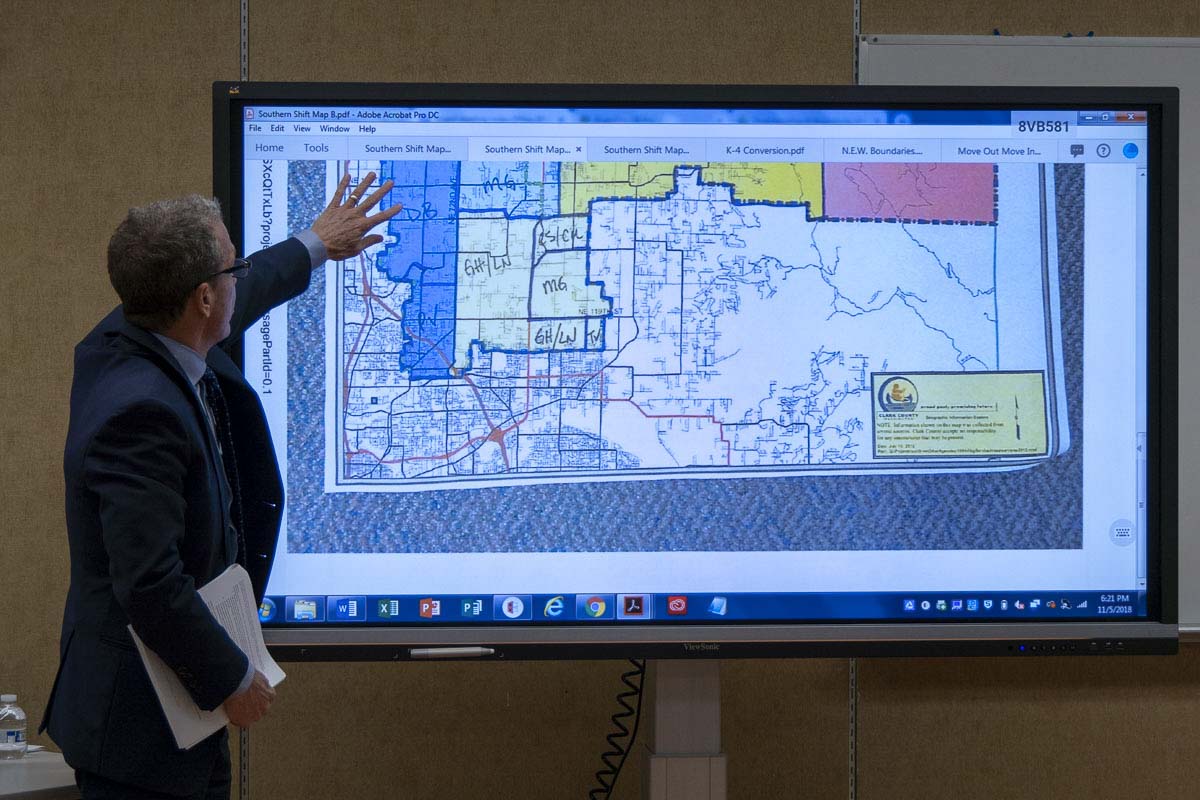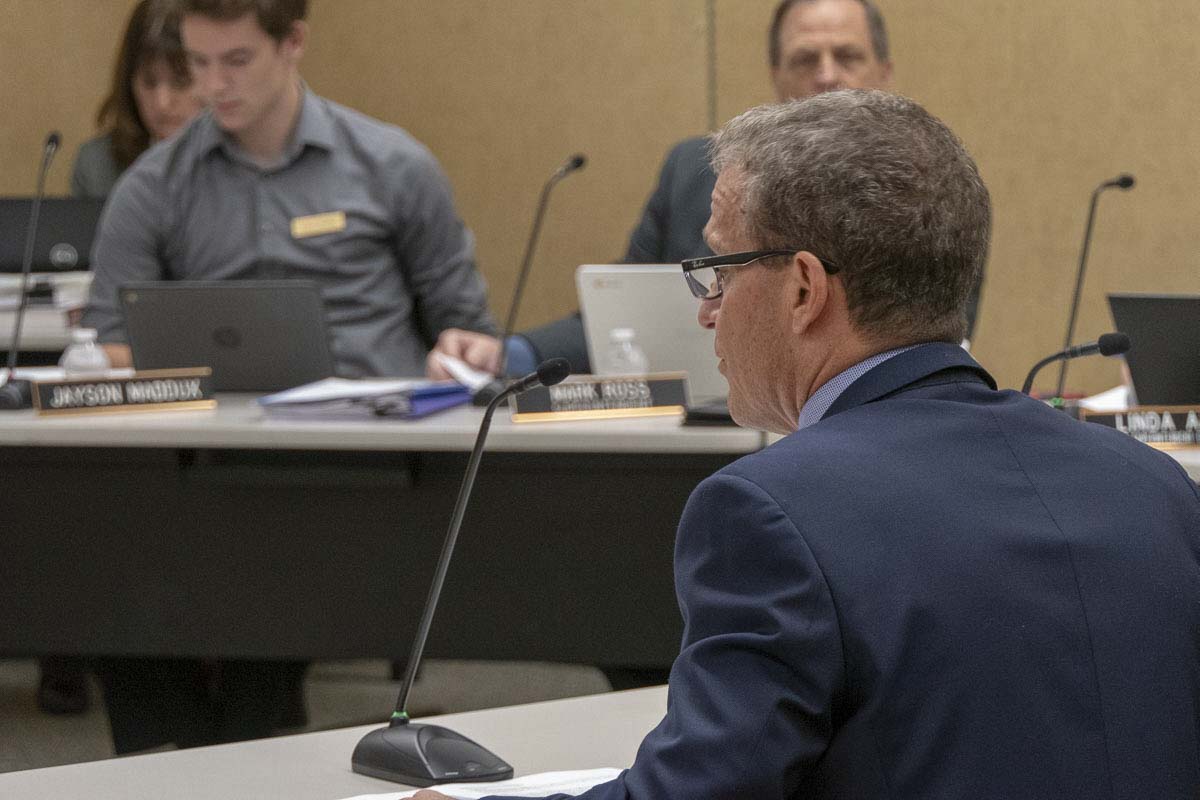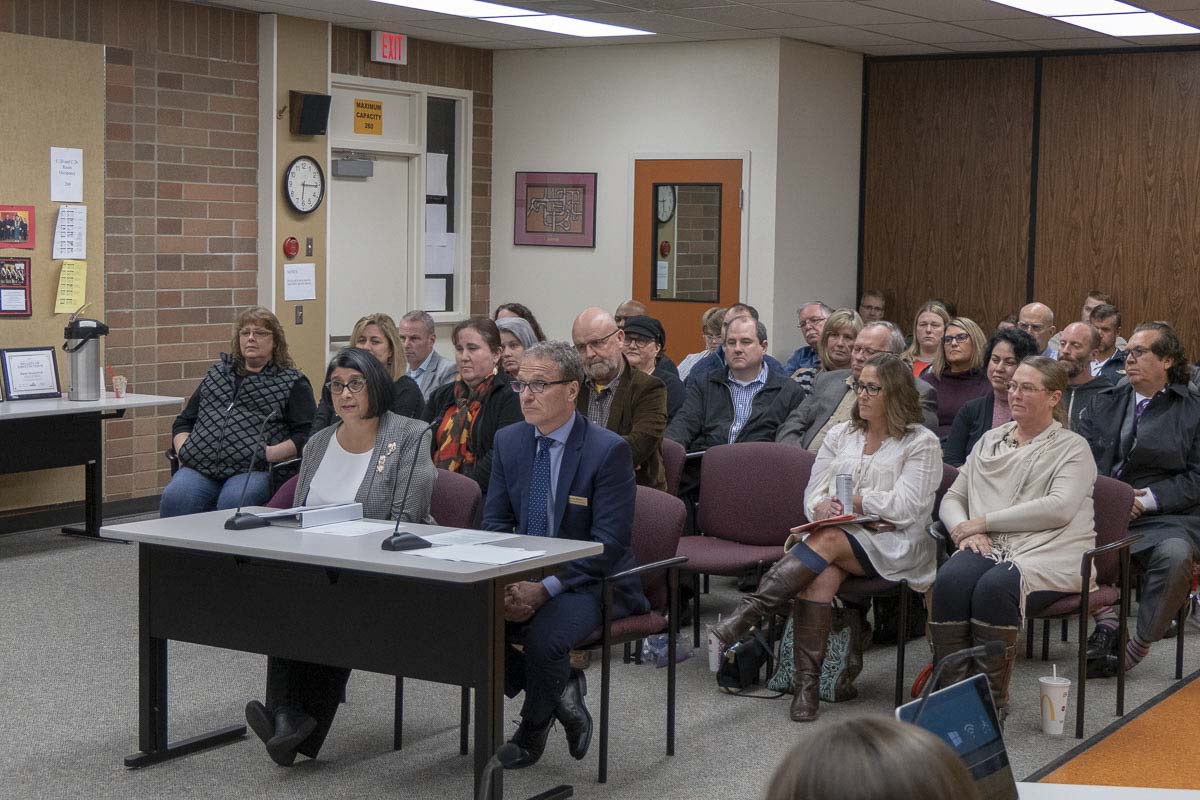The options came from six meetings of a 29-member committee formed to look at overcrowding in the district’s southern end
BATTLE GROUND — Odds are good that voters in the Battle Ground School District will be presented with yet another building bond next year. But after a second attempt to pass a $224.9 million building bond failed to get the needed 60 percent approval earlier this year, the writing was on the wall that major changes would need to be made.

“I’m so glad that we waited,” said Superintendent Mark Ross Monday evening after the school board heard four proposals from a 29-member committee tasked with finding solutions for the overcrowding issue facing schools in the southern part of the district. “I know that there was a little bit of unhappiness from the Glenwood/Laurin staff, that they wanted some immediate relief last year. But I really am very much glad that we waited on this process and that we gave people time to get involved.”
“It was the right group of people in the room,” said Frances Portillo. of Portillo Consulting, who was brought in to help facilitate the group’s discussion. “We we did, we could not have done if we didn’t have people who weren’t dedicated, studious, excited, passionate, and willing to give up a lot in this.”
The Overcrowding Committee was comprised of 13 parents and community members, six teachers and other staff members, six principals, and four district administrators. They met over six weeks and came up with four options for the board to consider.
Option A — The Southern Shift:
Would focus on redistributing the students in the overcrowded southern schools to less crowded, neighboring facilities. Some students from Pleasant Valley and Glenwood/Laurin schools would shift to Tukes Valley schools, Daybreak schools, and Maple Grove K-8. The board was presented with three variations of the southern shift option, based on different projections of future student growth.

Option B — K-4 Conversion:
This option focuses on Maple Grove becoming a Kindergarten through Fourth Grade school with proposed boundary changes. Current Maple Grove 5-8 students would move to neighboring schools. The plan would significantly address overcrowding at Glenwood Heights, but would not reduce the population at Laurin or Pleasant Valley. The committee did feel that freed up room at Glenwood could be repurposed to help address some of the growth issues for Laurin.
Option C — N.E.W. Boundaries:
This is potentially the most impactful of the proposed options. It would redraw school boundaries throughout the district, spreading students to newly formed “zones” to the north, east, and west (N.E.W.) to take advantage of north/south transportation corridors. Boundary changes would occur at all primary and middle schools. High school boundaries would remain unchanged. The hope would be to simplify transportation by using more of the main arterials, while also providing room for future growth at Glenwood/Laurin and Pleasant Valley.
Option D — Move in, Move out:
This option focuses on utilizing Maple Grove to relieve pressure from Glenwood Heights Primary and Laurin Middle School. Students who currently attend Maple Grove would shift to Glenwood/Laurin, Daybreak and Tukes Valley Schools. Create a new school community out of the densely populated southeast corner of the district with a current student population of 594. Pleasant Valley will also be relieved of overcrowding pressure by shifting some students to Daybreak schools. It would also allow for future flexibility if the district is able to eventually get a building bond passed for a new K-8 school in the southern part of the district.
You can read more about the proposed redistricting options on the district’s website, and see maps of the proposed boundary changes.
“We recognize that boundary changes are hard,” said Deputy Superintendent Denny Waters, who helped oversee the committee process. “If the current situation remains, family, staff, and students will continue to feel the effects of overcrowding. If changes are made, families that are removed from their community schools may have negative feelings about the proposed changes.”
According to the district, the Glenwood/Laurin campus currently holds around 1,500 students. The campus was originally built for just under 1,100. A report by E.D. Hovee & Co., Economic and Development Services, commissioned by the district, predicted that both schools could see upwards of 445 new students each over the next decade, given growth estimates in the southern part of the district. That report has been criticized by Battle Ground resident Dick Rylander, who points out that the district has actually seen enrollment decrease in that part of the district over the past couple of years.
“We believe that, given the circumstances, however, changes need to be made,” Waters added.

The board will hold a Nov. 19 work session at 5 p.m. to talk over the options. That meeting will be open to the public, but no community input will be taken at that time. Ross said the public will be allowed to comment on the plan for several meetings in late November and into early January. The district must make a decision before Jan. 20 to account for early enrollment for kindergarten students.
“I am in awe of this work,” said board member Mavis Nickels, whose district includes many of the most affected schools. “What I saw happening at that meeting, and when I heard the passion and care, almost had me in tears a few times.”
In addition to the four options presented, the committee also provided some feedback on actions they would like the district to take. One of those included reintroducing a building bond, and emphasizing that many older buildings in the district are unable to be upgraded to modern security levels. They recommended running a series of smaller, more targeted bonds, rather than one large one.
The committee also recommended that the school board join efforts to lobby the state legislature to consider a constitutional amendment, removing the 60 percent minimum vote requirement to get a school bond approved.
Another idea that wasn’t adopted in the proposal, but could be a consideration going forward, would be to move Alternative Learning Experience campuses, such as River Homelink in the old Maple Grove Primary building, in order to open space for other students. The committee also felt that doing a better job of advertising the district’s online learning components could lead more parents to take advantage of them, potentially reducing the number of students going to physical school buildings.




